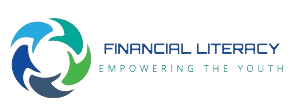Financial literacy has proven to be insufficient among the young people. However, we can find unbalanced rates of financial education between communities, population groups or people with different educative levels. If we take the countries with high financial literacy as an example, we can see how different stakeholders collaborate to improve the knowledge of finances among the population.
One of these strategies happen in the non-formal education field. There are already examples of successful non-formal financial literacy programs that work due to its interactive, dynamic, and learning-by-doing methodologies. This has the potential to reach young people and make the financial literacy learning process more engaging.
